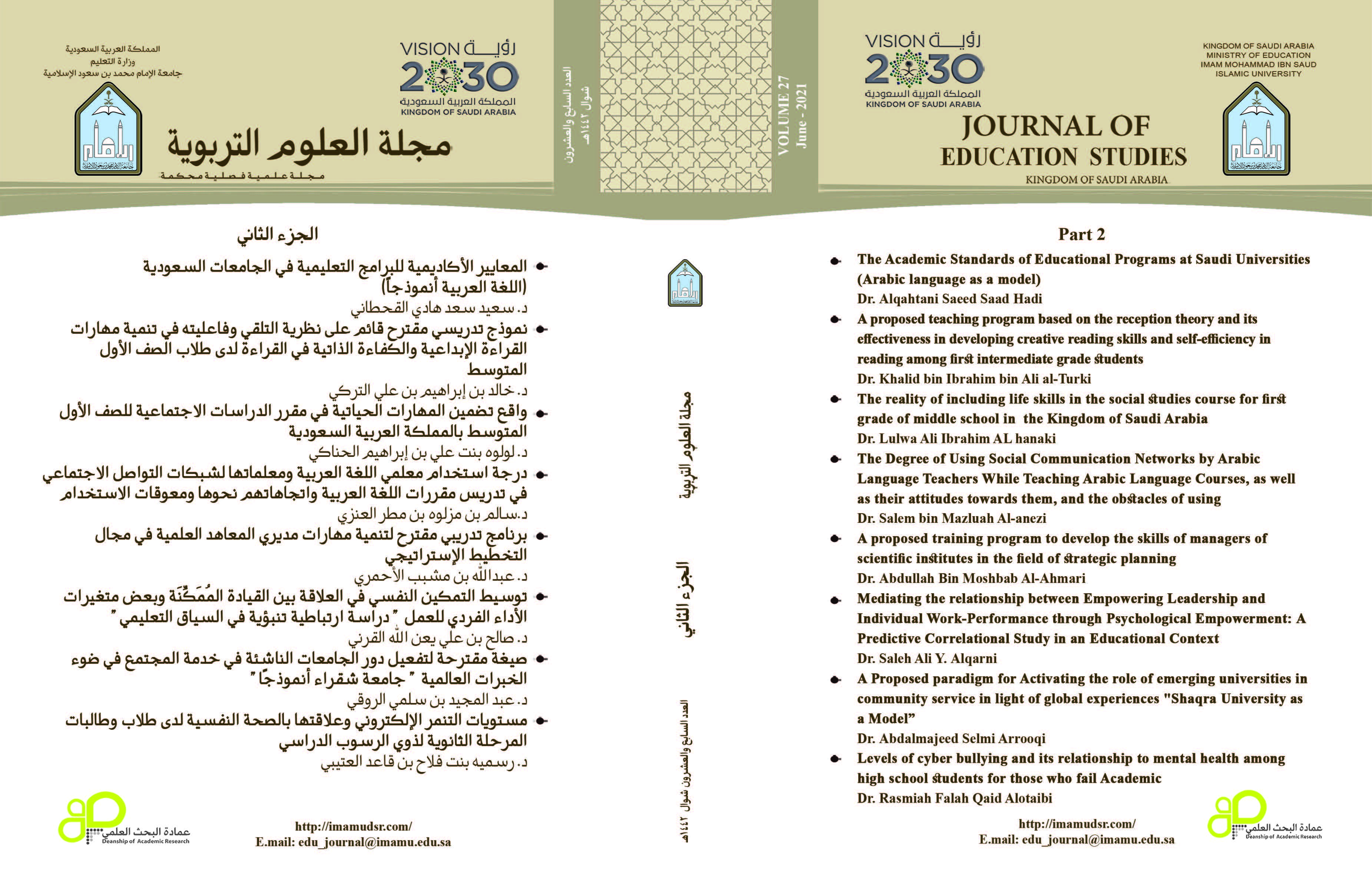The Degree of Using Social Communication Networks by Arabic Language Teachers While Teaching Arabic Language Courses, as well as their attitudes towards them, and the obstacles of using
Keywords:
Social communication networks, usage, obstacles, attitudes, teachersAbstract
This study aimed to identify the degree of using social communication networks by Arabic language teachers while teaching Arabic language courses, as well as aiming to identify the attitudes of the teachers towards using these networks. It also aimed to reveal the obstacles of using, in addition to whether there are differences regarding the gender or the school stage variable while using these networks. The study used the descriptive survey approach, and the questionnaire in three dimensions including the first dimension: the degree of usage, the second dimension: trends, and the third dimension: the obstacles. The study sample consisted of (277) teachers representing (28%) of the study population. The results of the study showed that Arabic language teachers usage of social communication networks took the degree of agree (medium), where "YouTube" came in the first place, with a (high) agree, then "Snapchat." "And" Telegram ", respectively, came in the second place with a degree of (medium) agree, while" Twitter " came in the fourth place, finally "WhatsApp " came in the last place, both of them came with (low) agree. The results showed a positive attitude with a degree of (agree) regarding the attitudes of Arabic language teachers weak usage of social communication networks. The results also showed the (medium) degree of agreement towards the existence of obstacles while using the social communication networks while teaching Arabic language courses. The study results showed that there were no statistically significant differences between the responses of the study population towards the usage of social communication networks regarding gender, while the results showed that there are statistically significant differences towards the usage of social communication networks attributed to the school stage variable (elementary, intermediate, and secondary), where these differences were in favour of the two stages (intermediate and secondary). The results also showed the (medium) degree of agreement towards the existence of obstacles while using the social communication networks while teaching Arabic language courses.




